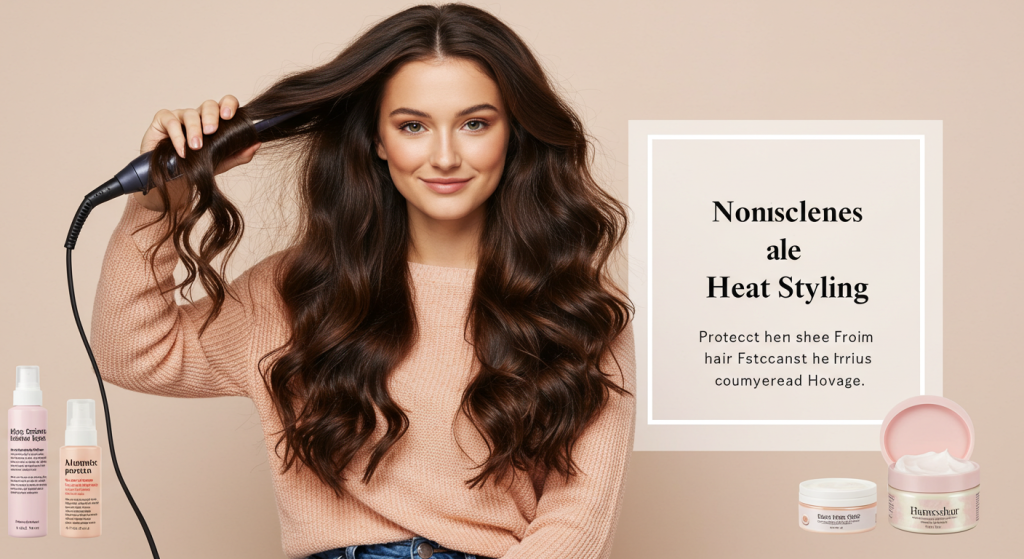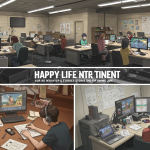From silky blowouts and bouncy curls to sleek, straight strands—heat styling can transform your look in minutes. But behind every flat iron and curling wand lies the potential for long-term damage if you don’t play it smart. Fortunately, you don’t have to give up your favorite tools to maintain healthy, beautiful hair.
With the right techniques, products, and habits, you can enjoy heat styling without sacrificing your hair’s health. Here’s your go-to guide for using heat tools the safe way—so you can style, slay, and protect your strands all at once.
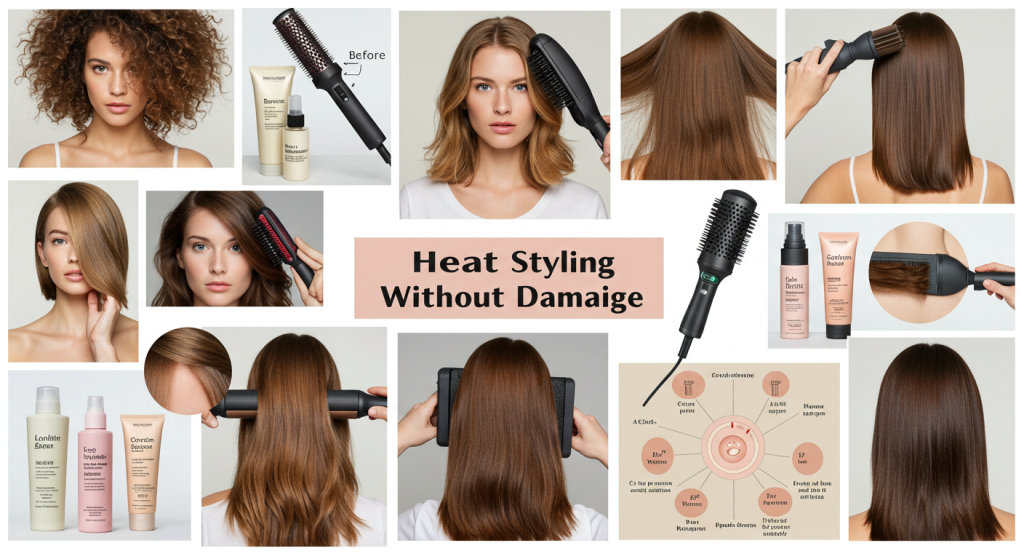
The Science: What Does Heat Do to Hair?
Hair is made up of keratin proteins and a protective outer layer called the cuticle. When exposed to high heat:
- The cuticle lifts, making hair more porous and prone to damage.
- Internal moisture evaporates, leading to dryness and brittleness.
- Over time, heat can weaken bonds in the hair structure, causing breakage, split ends, and dullness.
Repeated use without protection can lead to irreversible damage—but don’t worry. Prevention is totally possible.
Step 1: Start With Healthy Hair
Before you even think about heat styling, your hair should be in a good place health-wise. Dry, brittle, or over-processed hair is more vulnerable to heat.
Tips to prep:
- Hydrate regularly with moisturizing shampoos and conditioners
- Use deep treatments once a week (look for ingredients like keratin, shea butter, or argan oil)
- Trim split ends every 6–8 weeks to prevent further damage
💡 Healthy hair holds styles better and longer—meaning you won’t need as much heat.
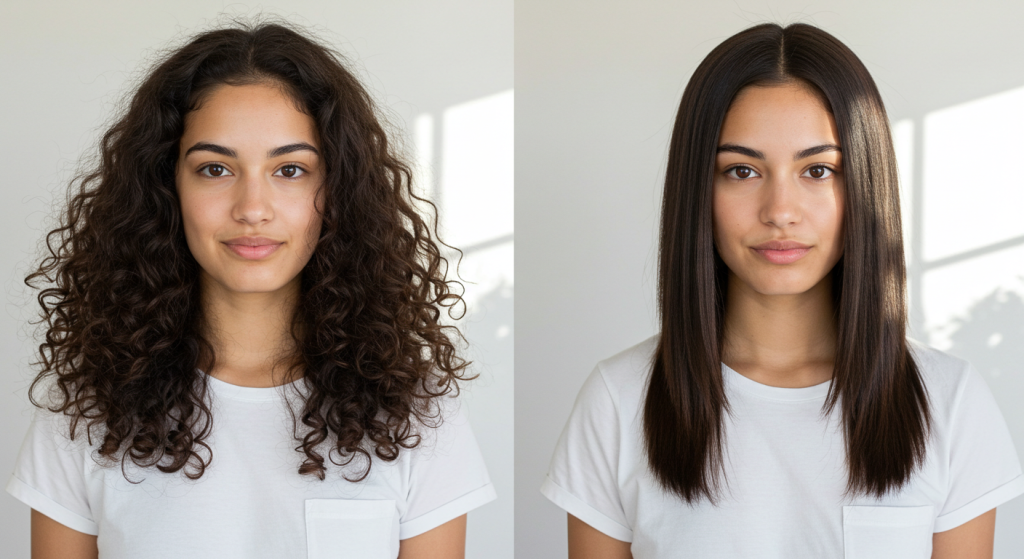
Step 2: Always Use a Heat Protectant
A good heat protectant is non-negotiable. These products create a barrier that reduces moisture loss and damage during styling.
What to look for:
- Silicones (e.g., dimethicone) to coat and protect the hair shaft
- Hydrolyzed proteins to strengthen and repair
- Glycerin or panthenol for moisture retention
How to use:
- Spray or apply to damp or dry hair (depending on the formula)
- Comb through for even distribution
- Let it dry before using heat to avoid sizzling strands
🔥 Heat protectants can reduce damage by up to 50%—don’t skip this step!
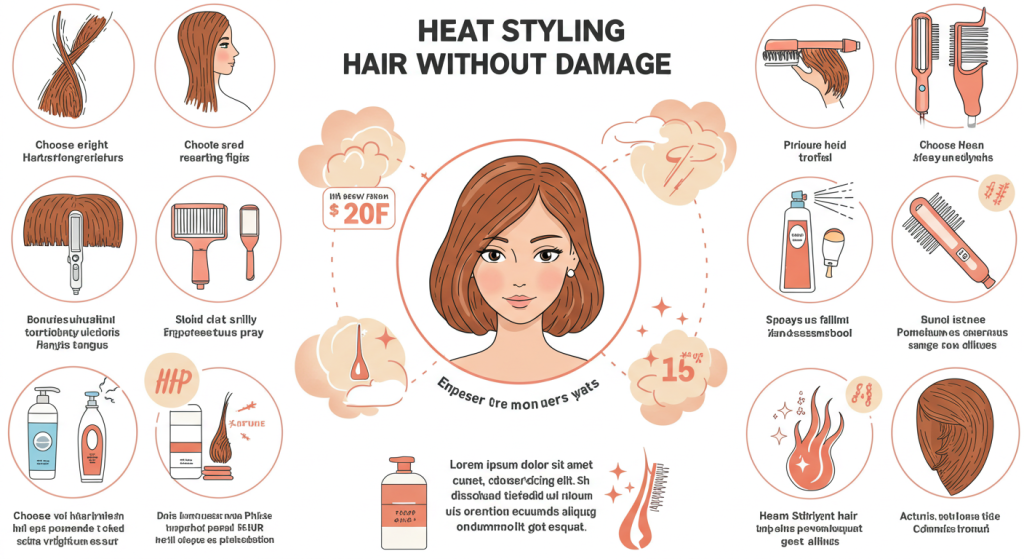
Step 3: Know Your Heat Tool Temperatures
Not all hair types can handle the same heat levels. Using the wrong temperature is one of the biggest causes of unnecessary damage.
| Hair Type | Recommended Temp |
|---|---|
| Fine or Damaged | 250–300°F (120–150°C) |
| Normal/Medium | 300–375°F (150–190°C) |
| Thick or Coarse | 375–450°F (190–230°C) |
Pro Tips:
- Start with the lowest temperature and increase only if needed
- Use tools with adjustable temperature controls
- Avoid tools without temp regulation—they often overheat unpredictably
Step 4: Use the Right Tool for the Job
Not all heat tools are created equal. High-quality tools can style effectively at lower temperatures and distribute heat more evenly.
Best practices:
- Ceramic or tourmaline plates reduce frizz and heat damage
- Ionic dryers cut drying time and lock in moisture
- Titanium tools heat fast but may be too intense for fine or damaged hair
💡 Invest once in a good tool—it pays off in long-term hair health.
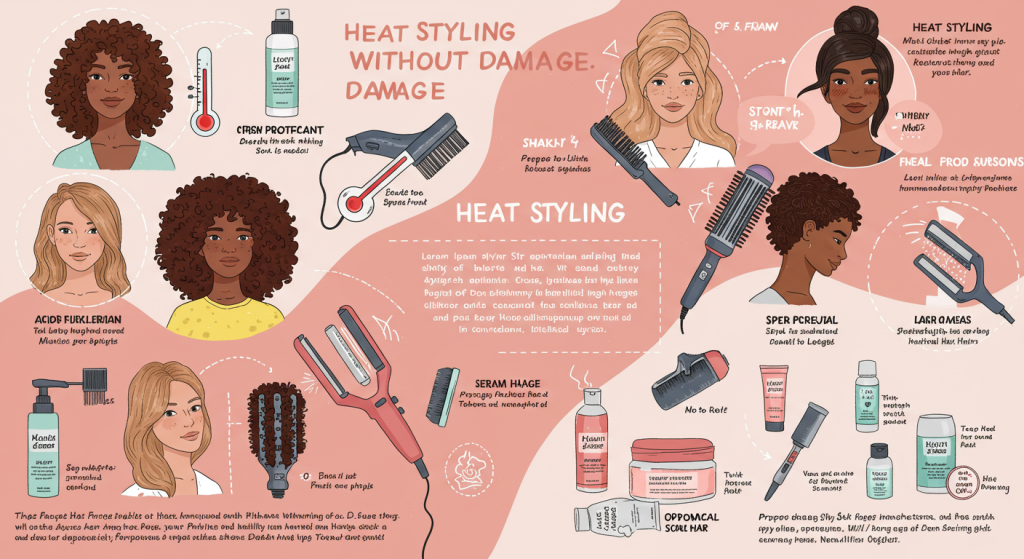
Step 5: Never Style Wet Hair With Hot Tools
Unless you’re using a tool specifically made for wet-to-dry styling (and even then, sparingly), styling wet hair is a major no-no. Wet strands are fragile and more likely to break.
What to do instead:
- Towel dry gently (avoid rough rubbing)
- Let hair air dry partially or fully
- Use a blow dryer with a diffuser or cool setting to speed things up
🚫 The sizzling sound you hear when flat ironing damp hair? That’s steam from moisture being fried inside your strands.
Step 6: Limit Heat Use and Embrace Alternatives
Even with protection, frequent heat exposure can cause cumulative damage. Try to:
- Limit heat styling to 1–2 times a week
- Rotate hairstyles (braids, buns, twists, or air-dried styles)
- Use no-heat curling methods (like braids, rollers, or flexi rods)
- Extend styles with dry shampoo or satin pillowcases
💫 Less heat = more length retention and shine.
Step 7: Aftercare Matters
Post-styling care is just as important as the prep. Give your hair some TLC to restore moisture and strength.
Must-do aftercare:
- Use lightweight oils or serums to seal in moisture (argan, jojoba, grapeseed)
- Hydrating masks once a week to replenish lost nutrients
- Clarify monthly to remove product buildup (but follow with deep conditioning!)
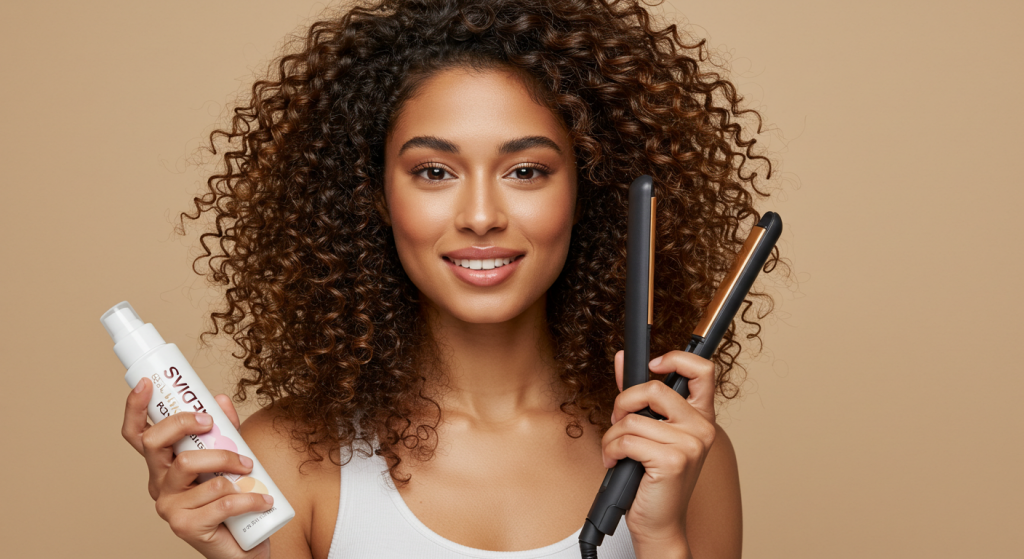
Bonus Tips: Damage-Free Styling Habits
- Don’t pass over the same section multiple times—slow, steady strokes at the right temp work better
- Keep tools clean—residue buildup can lead to uneven heat distribution
- Section your hair properly—smaller sections mean faster, safer results
- Cool down your curls—pin them up while they cool to set the style without extra heat
Final Thoughts: Style Smarter, Not Harder
Heat styling doesn’t have to mean heat damage. With smart choices, good products, and consistent care, you can create the styles you love while maintaining strong, healthy hair. Think of it not as restricting your routine, but leveling it up—giving your hair the support it needs to bounce back and shine through, no matter how often you switch up your look.
